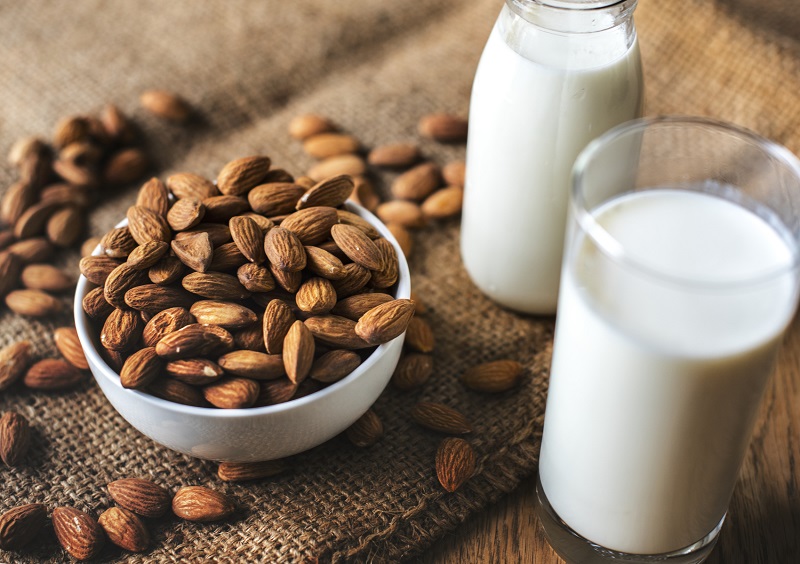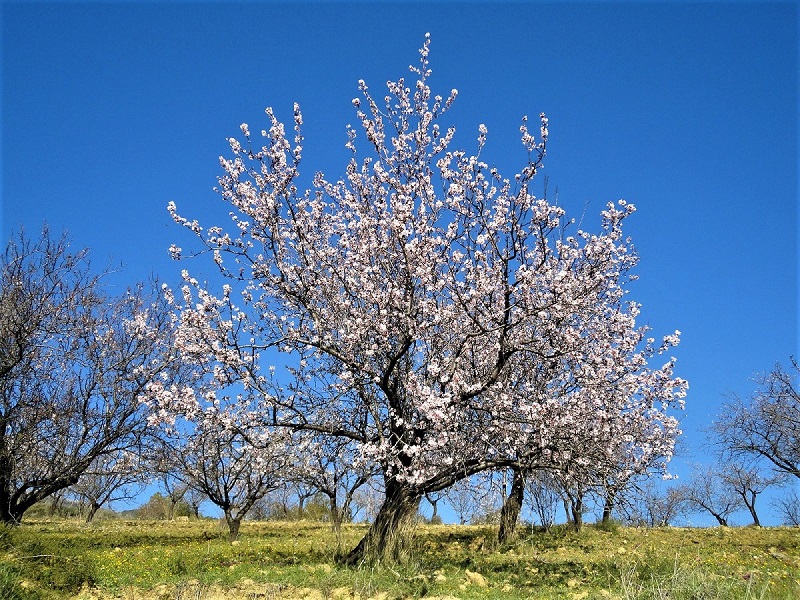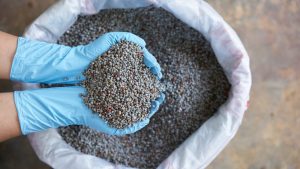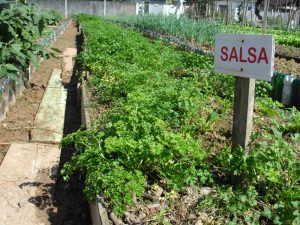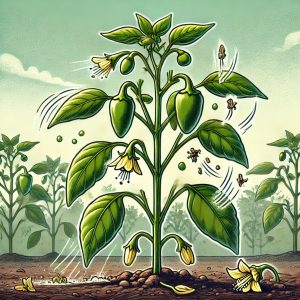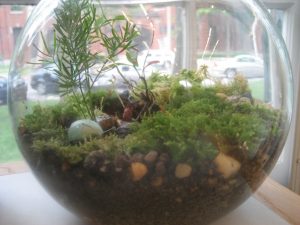Last Updated on April 15, 2021 by teamobn
The whole world is right now going nuts over almonds. People have been cultivating – and consuming – the coveted tree crop for some 6,000 years. Yet there are no indications that it’s going to drop out of fashion any time soon.
In fact, from marzipan, to candy, to the growing interest in almond “milk” products, people are devouring more almonds now than ever before.
Growing out of the same family as peaches, apricots, cherries, and plums, almonds are a wonderfully nutritious addition to any backyard garden.
Some experts have argued that the almond is the single most nutritious food you can eat. Research shows that eating almonds can help with weight loss and satiety, prevent diabetes, inhibit cancer-cell growth, and decrease the risk of Alzheimer’s disease.
The almond tree produces spectacular blossoms, too, before filling out with foliage in early spring. The flowers are a blush of pinkish white. They are quite fragrant and they usually form along the shorter lateral branches. Each flower has at least five wondrously delicate petals.
Where Almond Trees Thrive
Contents
The almond tree is native to Iran and its surrounding landscape. Today, however, 82 percent of the world’s almonds come from California. The tree also grows in Southeastern states, Texas, the coastlines of Washington, Oregon, all the way up the coast to Massachusetts in the east.
In Australia, farmers and gardeners grow almonds westward from the Riverina region to Sunraysia, Riverland Northern Adelaide Plains, and the Swan region in Western Australia.
But with good soil drainage and cold winters, the tree will grow all the way north to Toowoomba, Charleville, and even Central Australia.
Choosing an Almond Cultivar
When choosing your tree, the most important things to keep in mind are the growing conditions. The almond tree requires hot and dry conditions and will thrive in areas that have long summers with hot, dry, sunny weather.
The tree prefers well-drained, deep, loamy soils but will tolerate other soil types, including poor soils, as long as conditions are not too wet.
There are quite a few standard varieties, including ‘Carmel,’ which offers an excellent, well protected nut. The ‘Mission’ is a late bloomer but is an exceedingly productive tree once fully mature.
That said, most experts agree that the ‘All-In-One’ variety is the best for backyard growers as it only grows to about half the size of a typical tree. This makes this particular almond cultivar ideal for home orchards.
The ‘All-In-One’ almond variety is also exceptional as it’s among the few self-pollinating cultivars. You don’t need to grow two trees to produce fruit.
Planting Your Almond Tree
For best results, start your tree from a sapling. Plant the sapling around 15 to 20 feet from its nearest neighbor, in full sun and in well-draining soil.
Remember, if too much water accumulates around the roots, the tree is likely to suffer root rot. To prevent this, add some humus-rich sandy loam into the soil. This type of soil tends to absorb excess moisture.
Dig a hole in the ground large enough to accommodate the roots. Carefully set the sapling into the hole, making sure you don’t bend or damage the main taproot.
Be careful when placing your almond tree into the ground. To transplant a potted tree, plant it at the same depth it was planted in the pot.
Clear the base of the tree to prevent competition from weeds and other plants. Mulch the area well to ensure sufficient moisture and keep weeds at bay.
Once you’ve filled the hole up three-quarters deep, add two buckets of water. Experts suggest you add some fertilizer to the second bucket. You should also add some enhanced soil. Tap the soil with a shovel as you add each pile of dirt.
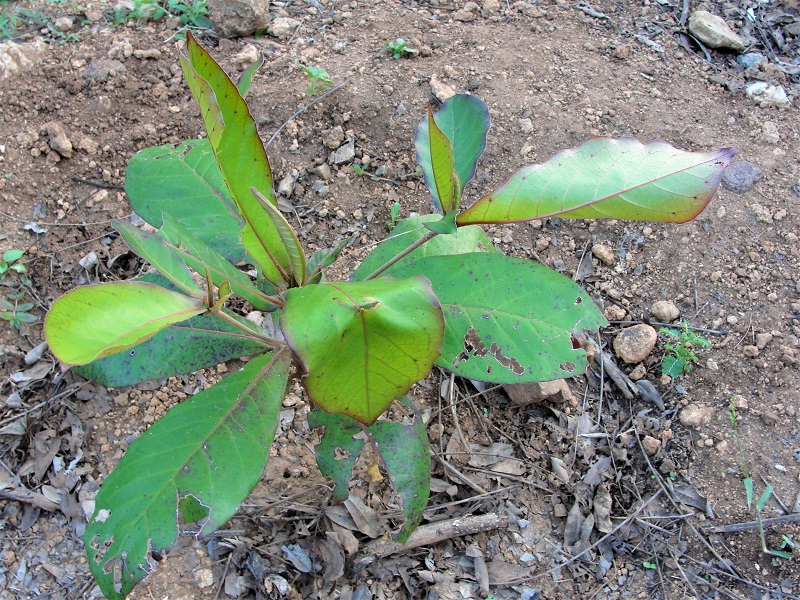
Pruning
You can begin pruning your tree once it’s firmly established. Don’t hold back. Pruning young almond trees determines their future shape, their productivity, and the quality of the nuts they produce.
Heavy pruning will help your tree develop a strong root system. You can safely cut back a third to one-half of the young tree’s twigs and branches.
The almond tree is commonly pruned into a “vase” shape with three or four main branches, which also allows for easy harvesting. When done correctly, the shape makes the tree more vigorous and productive even as it ensures a longer lifespan.
Pruning a mature tree, however, is more about maintaining the shape established earlier in the tree’s life. Pruning reinvigorates the tree and stimulates fruiting. You should aim to prune around 20 percent of an older tree’s canopy each year.
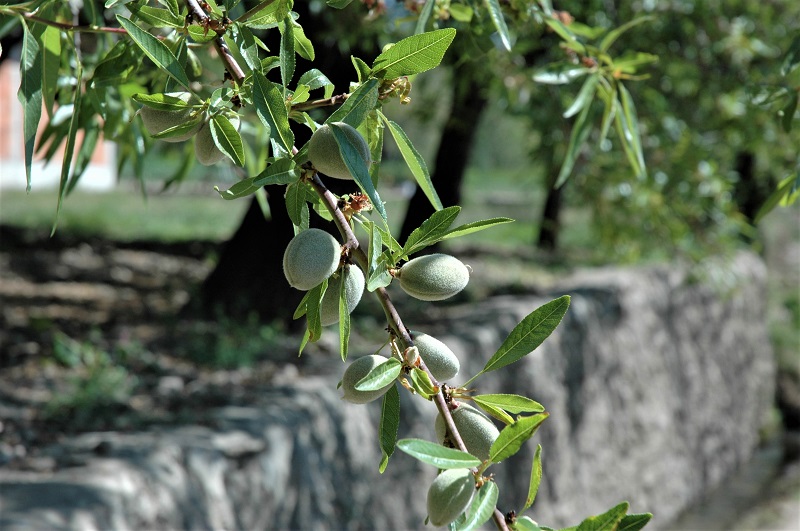
Harvesting Almonds
What we call almond nuts are actually the seed of a fruit from the almond tree. The almond tree begins to produce this fruit around three years after planting.
In Australia, the harvest season falls between February and April, when the ‘nut’ is at an acceptable moisture level. The almond harvest season in the US meanwhile runs from August through October.
Monitor your almond tree daily during the harvest season. Inspect all the almonds you can see from the ground, checking the hulls for signs of splitting.
Almonds begin ripening at the top of the tree, working their way downward. This means the nuts at eye level aren’t as ripe as those at the top.
Harvest your almonds when 90 percent of the hulls on the tree have split open to expose the shells inside. Start a little sooner, if necessary, to keep birds from making off with your crop.
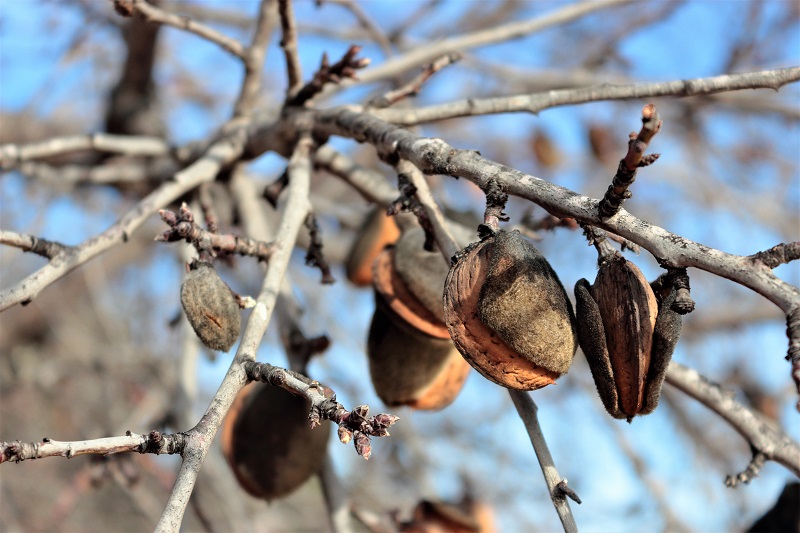
To harvest the almonds, shake the tree, then separate the hulls from the nut. Store your harvest in plastic bags. Freeze the almond nuts for one to two weeks to kill any worms.
So, are you ready to grow your own almond tree?

